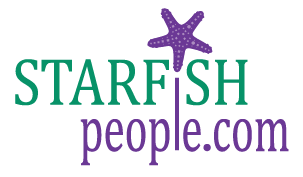Although guidance on the next phases of the Coronavirus Job Retention Scheme is not expected until later this month, employers need to start planning what their workforces will look like now.
Earlier this month, chancellor Rishi Sunak made yet another groundbreaking statement in the House of Commons, in which he set out his plan for re-shaping the Coronavirus Job Retention Scheme (CJRS). It has been extended for a further four months, up to 31 October 2020, and no changes will be made to the CJRS until the end of July so that, for example, the existing government grant of 80% of wages (capped at £2,500 per month) will continue to remain in place.
However, from 1 August, the CJRS will become more flexible and part-time furloughing (which is currently prohibited) will be permitted. More significantly, employers will be required to share the cost.
While the extension of the CJRS was universally welcomed, the uncertainty around the employer contribution has caused widespread concern for employers – and this uncertainty will remain until further government guidance is provided at the end of May.
What seems clear is that the government wants employers to take a more proactive approach about whether they should be retaining their workforce or whether they should be taking steps to make redundancies. The key driver is to avoid a so-called “zombie economy” in which the government is propping up large numbers of employees under the CJRS when, in reality, there is no prospect that their employer will be able to bring them back once the scheme comes to an end. This means employers will need to carry out a difficult analysis about future projections when they will often be entirely unclear about how and when their business will be reopening.
What will the CJRS look like after 1 August 2020?
We will not have an answer until the government guidance is published, but the best guess is that the CJRS will be altered so that the government’s 80% contributions drops, perhaps to 60%, and the employer has to make up that 20% differential. There may also be a gradual tapering off of the government contribution up to the end of October when the scheme is intended to be wound up. This would probably mean an increase in employer contributions.
What do employers need to address now?
There are a number of issues that employers will need to consider now. In particular:
- Are they are in position to make a contribution, once the government subsidy is reduced? If so, will they be topping up to 100% of salary or will they only be topping up to 80% of salary? Depending on the circumstances, this is likely to need further employee engagement and may mean that express employee consent is required if there is going to be a change to what employees are currently receiving.
- Although the new concept of part-time furloughing is undoubtedly sensible and practicable – and indeed there are calls for it to be introduced earlier than 1 August – it is likely to bring with it a number of issues that employers will need to be mindful of. For example, there may be issues in relation to whether there is a contractual right to change an employee’s working hours, which is likely to be more problematic if the employee is not being paid 100% of salary.
- There may also be place of work issues to consider if, for example, an employer is using new or alternative “Covid Secure” premises as a result of the need to implement social distancing. In this case, employers will need to assess their contractual mobility clauses, consult with their people and give them reasonable notice prior to relocating them to new premises.
- There are likely to be two “cliff-edges” when employers would have had to commence a 45-day collective consultation process. The first is likely to be on 16 June 2020, which is 45 days prior to 1 August 2020, when the CJRS will change and some employers will have to contribute towards payments to furloughed employees. The second “cliff-edge” will be 15 September2020, which is 45 days prior to the end of the CJRS on 31 October 2020. Indeed, these dates may be earlier if an employer has a proposal at an earlier date.
While there is much employers will not know until further details are published at the end of May, there are some issues that they can start considering now. Unfortunately, one of the most significant points for consideration will be assessing how many employees can be retained.
Author Mark Kaye.
If you’re looking for advice on this subject and want to know how the changes will impact your business.
Contact us by completing our secure contact form

Alternatively call us direct on 01243-607357, or email [email protected]


